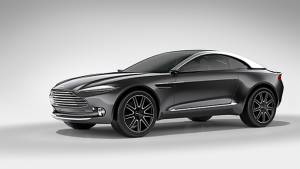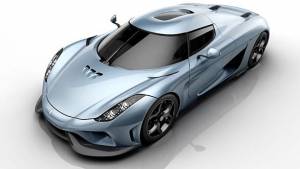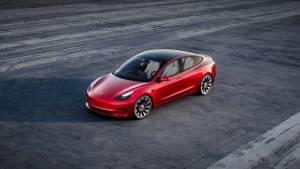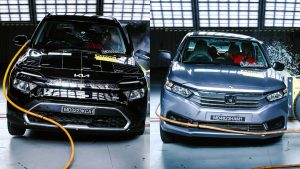2015 Geneva Motor Show: Dacia Duster with TCE 125 turbopetrol engine unveiled
Dacia has just introduced the Duster with a new 1.2-litre turbocharged petrol engine badged the TCE 125 at the 2015 Geneva Motor Show. The new engine is placed under the hood of the four-wheel drive Duster and produces 125PS and 205Nm of torque that is available from 2,000rpm.
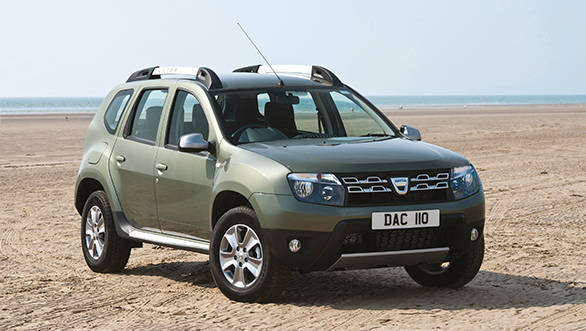
The new engine is introduced in accordance with the Renault group's strategy of using downsized engines to comply with strict emission norms. The engine also benefits from the adoption of technologies such as engine start/stop, deceleration energy recovery and reduced friction, says the company. The start/stop function reduces emissions and improves fuel-efficiency in traffic while the energy recovery system stores the energy that is generated in the form of heat while braking and uses it to charge the battery.
The 1.2-litre turbo petrol is mated to a six-speed gearbox with optimally set gear ratios. Since this is a 4x4 Duster, the first gear is shorter which helps the Duster navigate rough terrain, while the tall sixth gear ensures comfortable and economical highway cruising, says Dacia. The company adds that the high torque is a result of high pressure, direct fuel injection and a turbocharger with a continuous angle variator on the camshaft.
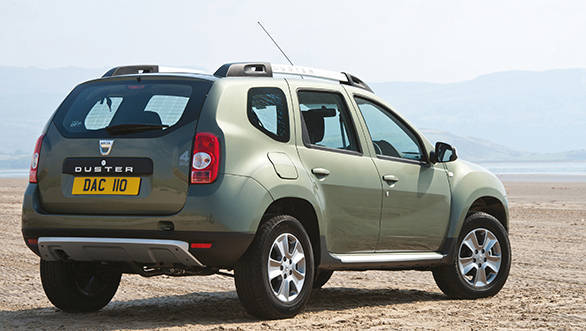
The new Dacia Duster with the TCE 125 petrol engine will be available in the UK by 2016. Renault, which sells the Duster in India with its own badging, has not confirmed if the new engine will be introduced here. Its closest competitor, the Ford Ecosport meanwhile is available in India with Ford's highly acclaimed 1.0-litre, 120PS Ecoboost petrol engine.
For more stories from the Geneva Motor Show 2015, click here
DACIA ADDS NEW TCe 125 ENGINE TO 4WD DUSTER
| Dacia is celebrating 10 years of unrivalled success in Europe and the Mediterranean basin at the Geneva Motor Show by introducing a new TCe 125 turbocharged petrol engine to the four-wheel-drive Duster. The TCe 125 engine is perfectly suited to the Renault Group's downsizing strategy to reduce fuel consumption and emissions while enhancing driving pleasure and performance. It is a 1.2-litre unit crammed with the latest energy-saving technologies engine Stop & Start, deceleration energy recovery and reduced friction while delivering comparable performance to a normally aspirated 2.0-litre unit. This aluminium-block 1,198cc unit develops, as the name suggests, 125 hp, but of greater importance for everyday driving and off-roading is the maximum 205 Nm of torque available from just 2,000rpm to 3,000rpm. This endows the Duster with outstanding driveability and flexibility. Ninety per cent of maximum torque is available from just 1,500rpm. The high torque output also allows for a wide spread of gear ratios. A short first gear in the six-speed four-wheel-drive transmission allows the car to manoeuvre at very slow speed on rough terrain, while a long sixth makes for quiet, comfortable, economical highway cruising. That high torque output comes from a combination of direct high pressure fuel injection and a turbocharger with a twin continuous angle variator on the camshaft. Renault's engine Stop & Start technology minimises fuel consumption and emissions in traffic while ensuring that fuel is always injected into the most appropriate cylinder for instant restarting, while the deceleration energy recovery system stores energy normally wasted as heat during slowing down and stopping in the battery to restart the car. Fuel consumption, emissions and performance figures will be announced closer to the car's launch date. The Duster's four-wheel-drive system has three operating modes so that drivers can select the most efficient programme for the road and conditions. The system can be locked in two-wheel drive (100 per cent of engine torque to the front wheels) or four-wheel drive (50:50 torque distribution), or put in Auto, in which case the torque balance varies according to the car's speed and the grip at each wheel, up to a maximum of 50:50 front-to-rear. | |
Related Stories
Top Stories
Latest Videos
Most Popular
- Budget Sportbike Showdown: Kawasaki Ninja 500 vs Aprilia RS 457 vs Yamaha YZF-R3
- Mumbai-Pune Expressway speed restrictions updated
- Upcoming Mahindra XUV 3XO: All you need to know
- 2014 Triumph Daytona 675 vs 2024 Kawasaki ZX6R - A Decade of Evolution in Supersport Motorcycles
- 2024 Hyundai Creta vs Toyota Urban Cruiser Hyryder vs Skoda Kushaq comparison review - the hype is real?
